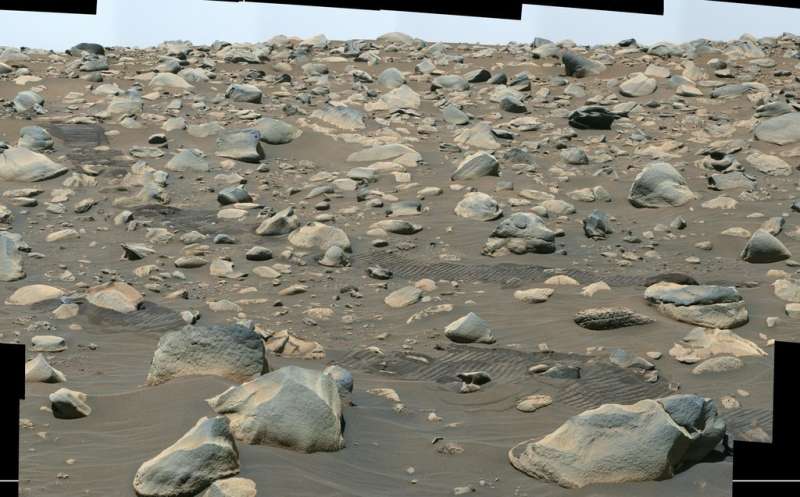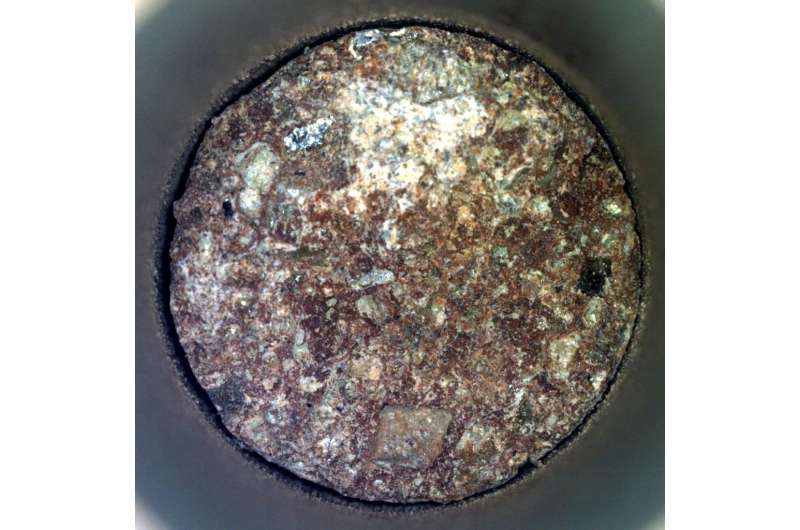This article has been reviewed according to Science X's editorial process and policies. Editors have highlighted the following attributes while ensuring the content's credibility:
fact-checked
trusted source
proofread
An ancient river is helping NASA's Perseverance Mars rover do its work

NASA's Perseverance Mars rover sealed the tube containing its 20th rock core sample on June 23 (the 832nd Martian day, or sol, of the mission), and the mission's science team is excited about its potential. That's because this sample was drilled by the rover from an outcrop composed of tiny chunks of other rocks that were carried from elsewhere by a river in the distant past and deposited here, where they became cemented together. Conglomerates like this one (nicknamed "Emerald Lake" by the team) pack a lot of information about places the rover may never visit, with each new rock fragment representing a geologic a story to be told.
"Pebbles and boulders found in a river are messengers from afar," said Ken Farley, Perseverance project scientist from Caltech in Pasadena. "And while the water that created the Martian riverbed that Perseverance is currently exploring evaporated billions of years ago, the story carried by those waters remains fresh, stored in conglomerate rock."
Perseverance is collecting these samples so that they can be brought to Earth by the NASA-ESA (European Space Agency) Mars Sample Return campaign and studied by lab equipment that's too large and complex to bring to Mars. Scientists will be able to look at each pebble and fragment in this core, dubbed "Otis Peak," to determine details such as its age, what the environmental conditions were like in the river when the conglomerate formed, and whether it contains signs of ancient microbial life.
Now in its third science campaign, Perseverance is exploring the top of a fan-shaped pile of sedimentary rock that stands 130 feet (40 meters) tall. With this sample sealed and stored in its belly, the rover is on its way to a low ridge called Snowdrift Peak. To get there, it will have to cross a field of boulders.

As with the rock fragments in the Otis Peak sample, scientists believe the boulders likely formed elsewhere and were transported to their present location billions of years ago by an ancient river. Boulders are also desirable because their large surface area allows scientists to visually investigate many potentially distinct rocks in a single image. So the team will be keeping their options open, ready to stop for anything that piques their curiosity.
"Whether the boulders appear intriguing enough for closer examination and possible sampling remains to be seen—literally," said Farley. "We're taking a page from the past. Prospectors looking for gold or diamonds in the old days often looked in rivers to determine whether there was any deposit of interest upstream. No need to hike up there to see—let the river do the work."
Provided by JPL/NASA





















